“Where there is an observatory and a telescope, we expect that any eyes will see new worlds at once.” -Henry David Thoreau
With more stories of the Universe having been told this past week at Starts With A Bang, it's always a thrill to look back, see what we've covered and see what thoughts and ideas they've inspired in you. In the unlikely event you missed any of them, here's what we talked about:
- The Multiverse and the road less traveled (for Ask Ethan),
- How to catch a speeding star (for Mostly Mute Monday),
- Why does blowing on your hot drink cool it down?,
- The science of Hillary Clinton's coin toss victories,
- The cosmic gift of neutron stars (a live-blog event featuring Vicky Kaspi),
- The two Big Bangs, and
- The future of astronomy: the Giant (25 meter!) Magellan Telescsope. (Continuing the future of Astronomy.)
Our latest podcast also went live this week, on Pluto, Charon and the outer Solar System:
 Image credit: public domain, retrieved from https://pixabay.com/en/globe-earth-country-continents-73397/.
Image credit: public domain, retrieved from https://pixabay.com/en/globe-earth-country-continents-73397/.
From PJ on the Multiverse and quantum entanglement across Universes: "I would have to pass on the ‘entanglement’ aspect since I have no conscious connection to other lives in other places (universes)."
It's not a matter, unfortunately, of whether you have a conscious connection or not when it comes to quantum entanglement. When an entangled photon has its partner's spin measured, does its state change in any way that's perceptible to itself? In fact it doesn't: the only way to communicate any information is to bring information about those two photons to the same location, which can only happen at the speed of light. If part of your quantum wavefunction collapsed, you would never know you were in a different state than you where when you were in an indeterminate state (or superposition of states), and yet, there you'd be. In this case, absence of evidence doesn't mean evidence of absence.
From Naked Bunny With A Whip on last week's "Monstrous Cosmic Gas Cloud Set To Ignite The Milky Way" title: "I hope you didn’t think I was criticizing your headline. I thought it was great, and for exactly the reasons you mentioned. [...] It was like the breathless blurbs I remember from comic book covers back in the 70s and 80s."
I wish that everyone felt the way you do, but I had someone quite vociferously berate me for such sensationalism, and told me they'd never read my work again because of how cheaply I'd sell out for some cheap hits. In any case, it's not something I'm ashamed of, but I'm glad not everyone feels the way that person does, so thanks for sharing.
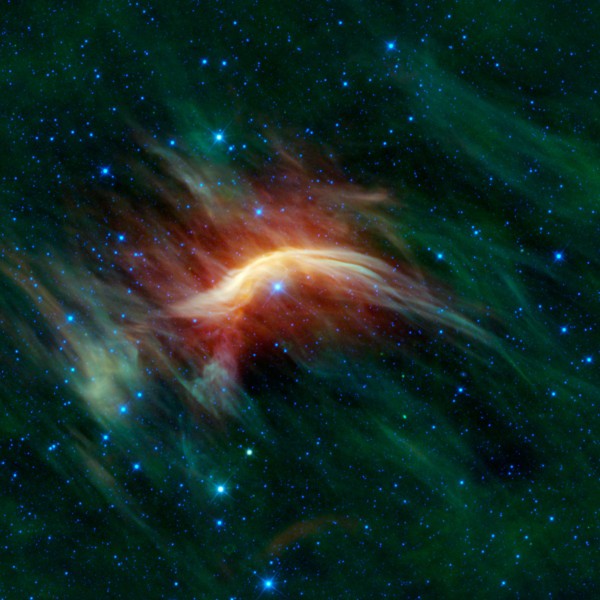 Image credit: NASA/JPL-Caltech/UCLA, WISE spacecraft, via http://www.jpl.nasa.gov/spaceimages/details.php?id=PIA13455.
Image credit: NASA/JPL-Caltech/UCLA, WISE spacecraft, via http://www.jpl.nasa.gov/spaceimages/details.php?id=PIA13455.
From Ragtag Media on stars speeding through the interstellar medium: "[I]s there a way to compare the the relative speed of suns/gas-cloud to earth/vapor clouds?"
The simplest way to do that is to just measure the speeds directly, which can be done in a fairly straightforward fashion. However, if you're interested in what causes these visual effects of a star passing through a gas cloud and seeing this "shock" effect, it's related to the speed of sound in a material. If a plasma drops in speed from supersonic to subsonic, you'll see the effect. This happens when the Sun's plasma strikes the Earth's magnetosphere at speeds above 400 m/s, and happens when stars pass through the plasma of the interstellar medium at sufficient speeds dependent on the density of the plasma. The Sun, by the way, does not emit a bow shock as it passes through the interstellar medium, as NASA's IBEX (Interstellar Boundary EXplorer) found in 2012/2013.
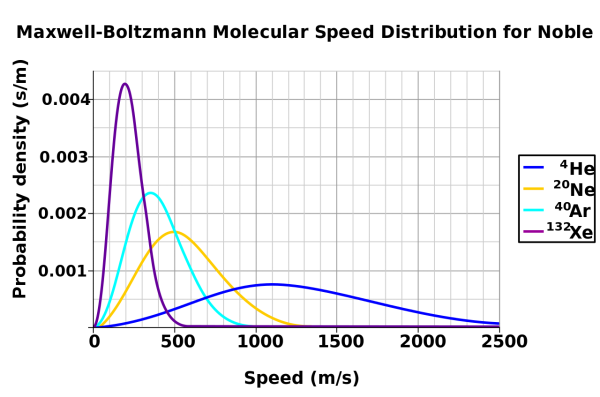 Image credit: Wikimedia Commons user Pdbailey, who created this image and placed it in the public domain. The speed distribution is qualitatively the same for liquids as it is for gases.
Image credit: Wikimedia Commons user Pdbailey, who created this image and placed it in the public domain. The speed distribution is qualitatively the same for liquids as it is for gases.
From Michael Kelsey on the application of coffee thermodynamics to cryogenic physics at the coldest temperatures: "The same process, evaporative cooling, is important in atomic, molecular and optical physics (AMO) for production of extremely low temperature systems, such as Bose-Einstein condensates.
In a typical application, a collection of relatively slow (low temperature) atoms are contained in a trap of electric and magnetic fields. The system is tuned in such a way that the fastest moving atoms can escape out of the trap (and stick to the walls), while the slow ones are turned around and kept in place by the field configuration.
Over time, you end up with a fewer atoms, but the collection is all together much colder (nanokelvins or below)."
This is one of the most important techniques in getting that extra significant digit lower in our quest for absolute zero, to go from microK to nanoK to all the way down to (I believe) hundreds of picoK at the lowest. It's absolutely a wonderful technique, and it's the same principle as cooling your coffee: you remove the hottest particles in the distribution and you're left with a smaller number of particles with a lower average temperature. In principle, you can keep this up and leave yourself with a tiny number of particles in an incredibly cold state, for any initial temperature configuration.
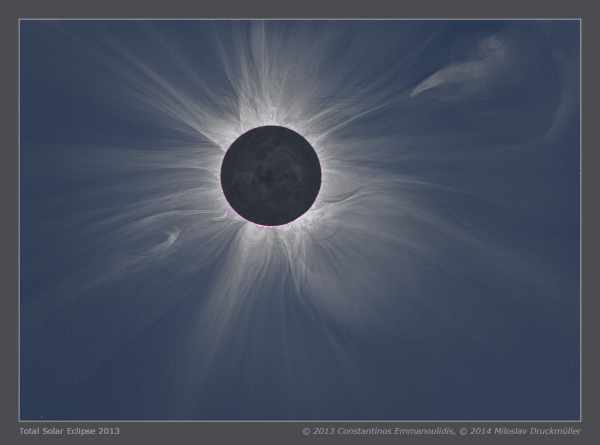 Image credit: © 2013 Constantinos Emmanoulidis, © 2014 Miloslav Druckmüller, via http://www.zam.fme.vutbr.cz/~druck/eclipse/Ecl2013g/TSE_2013wa_ed/0-inf….
Image credit: © 2013 Constantinos Emmanoulidis, © 2014 Miloslav Druckmüller, via http://www.zam.fme.vutbr.cz/~druck/eclipse/Ecl2013g/TSE_2013wa_ed/0-inf….
The counterpart -- of removing and keeping the highest-temperature particles -- could work for ultra-heating as well, which is part of how rarefied gases like in the Sun's corona get so hot!
 Image credit: Pixabay user Unsplash, public domain, via https://pixabay.com/en/steam-tea-coffee-aroma-336464/.
Image credit: Pixabay user Unsplash, public domain, via https://pixabay.com/en/steam-tea-coffee-aroma-336464/.
From eric on the coffee cooling: "A good blow across the cup’s surface (rather than directed down into the liquid) is also going to create a Bernoulli effect; i.e. your rapidly moving breath (slightly) lowers the pressure above the surface, leading to (slightly) more evaporation."
The bigger effect of blowing across the cup's surface is to replace the air that's almost saturated with the hot water vapor molecules with air that's much lower in its water content, and hence allows the water at the surface to evaporate more quickly. Bernoulli is right, but it's not dominant. Blowing slowly across the surface will work almost as well as blowing intensely across it.
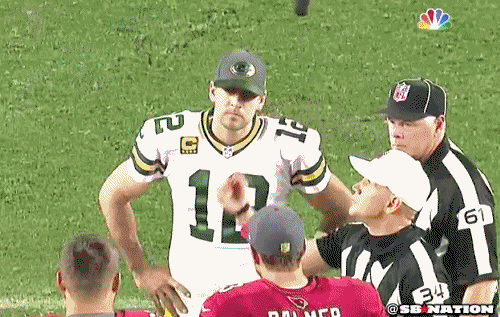 Image credit: via https://goo.gl/6ZuphV.
Image credit: via https://goo.gl/6ZuphV.
From Ragtag Media on coin flips: "Ethan, you once lived in Wisconsin (Packer Fan?), did you see the Packers/Cards Coin Non Flip?"
I think it's pretty clearly the greatest injustice in the history of the world, that someone with those lack-of-coin-flipping skills would be allowed to be a referee like that. In elementary school, we definitely would've had a do-over for that one.
From PJ on something we should all watch: "As an aside, here is an update for Ceres if you have not seen this yet :- https://www.nasa.gov/feature/jpl/new-animation-takes-a-colorful-flight-over-ceres
"
It's worth noting that this is an enhanced color flyover, meaning this isn't what your eyes would see, but rather where colors are assigned to highlight various features like younger regions that wouldn't be visually discernible to us. Still, it's absolutely beautiful, as the nearly 800,000 views it's gotten attest.
Image credit: ESO/L. Calçada, of a pulsar orbiting a binary companion and the gravitational waves (or ripples) in spacetime that ensue as a result.
From R Weaver on neutron star rotation speeds: "Where do you get 2/3 speed of light? Even the fastest known pulsar PSR J1748-2446 at 716 Hz, has ( assuming a diameter of 20 miles which is larger than typical ) an equatorial speed of 1/4 c."
This is a good question! There are two limits: the theoretical limit and the practical limit, and how neutron stars can go from one to the other. If a neutron star rotated at greater than 2/3 the speed of light, the surface material would escape the gravitational pull, and the neutron star would begin to be dissociated.
However! Rotating rapidly will also distort you from a spherical shape, and neutron stars need to be perfectly spherical. In fact, the need for a neutron star to be spherical is why an initially rapidly rotating neutron star (which is allowed) will slow down to “only” about 1/3-1/4 the speed of light through gravitational radiation: a non-spherical shape will gravitationally radiate until it’s spinning slower, and hence becomes more spherical. This slowdown happens on timescales of just a few weeks at most, meaning that if there ever is a neutron star created from a super-rotator, it becomes "normal" in a very short amount of time. This isn't thought to be necessary, since the fastest neutron stars are quite old. In any case, 2/3 c is the limit for how fast it can spin without dissociating; 1/4 to 1/3 c is the limit for practical neutron stars.
From PJ on wanting a GMT mirror: "AAhhh, just one of those mirror cells would do me fine. I wonder if they would miss just one? [...] Preferably any one without a hole …."
You don't normally think about it in these terms, but you want the hole in your mirror if you only have one. You do! This is the way all the largest optical telescopes work, although you might not understand immediately. Have a look at this image for the current largest ground-based telescopes.
When the light comes in from the Universe, it bounces off the mirror (or mirrors), and gets focused at a point in front of the telescope. But ask yourself: then what? Normally, you've got to do something with that light, like focus in and send it to a detector/camera/CCD/analytical system, and that means you need something that will take up space. That could be a secondary mirror or it could be an observing apparatus, but regardless, you'll need a physical object there.
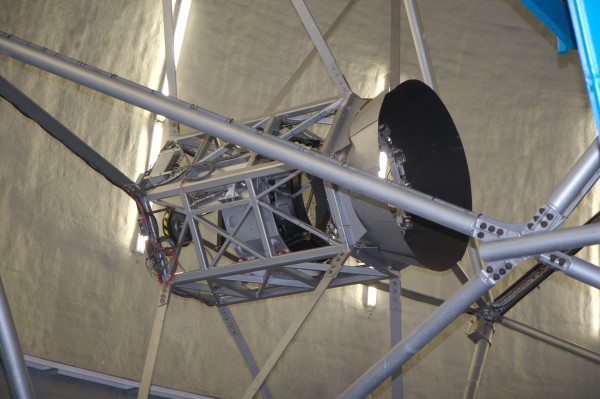 Image credit: flickr user z2amiller, via https://www.flickr.com/photos/z2amiller/, of the Keck secondary mirror.
Image credit: flickr user z2amiller, via https://www.flickr.com/photos/z2amiller/, of the Keck secondary mirror.
If you don't have a hole in your primary mirror, then the light that gets diffracted and suffers from edge effects around your secondary mirror/apparatus will encounter your primary mirror and will create unwanted artifacts on your image. The tiny bit of extra light is never worth the headache of throwing in unusable, catastrophic noise to your image!
So thanks for a great (and civil!) week here on Starts With A Bang, and looking forward to the next one for certain!
- Log in to post comments

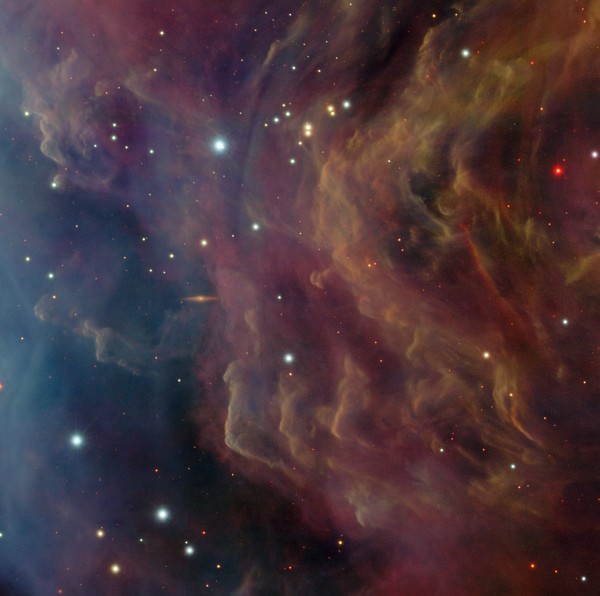
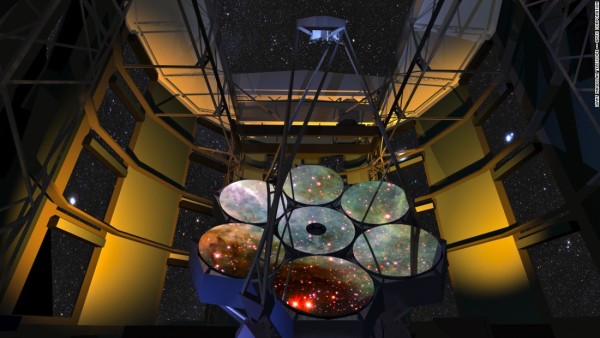

Hi Ethan,
I agree with your comments on the value of a perforated primary, however, using an offset optical path avoids the hole. If one of the non-perforated mirrors are used, it is already figured for the offset, ergo the inherent distortion is corrected. We have been constructing offset optical telescopes for many years now to avoid the central vignette incurred by the secondary. This has another advantage in that spider artefacts (artifacts) are not present which aids in the separation of binary or multiple stars. :)
A day or so after the game there was an official statement from the NFL that said there was no need to do the toss again: the statement said the rules call for a toss but don't specify that it has to flip. He could have left it with the first toss.
@PJ, We're going to give you a follow-up for this one!
Thanks, Ethan, appreciate it.